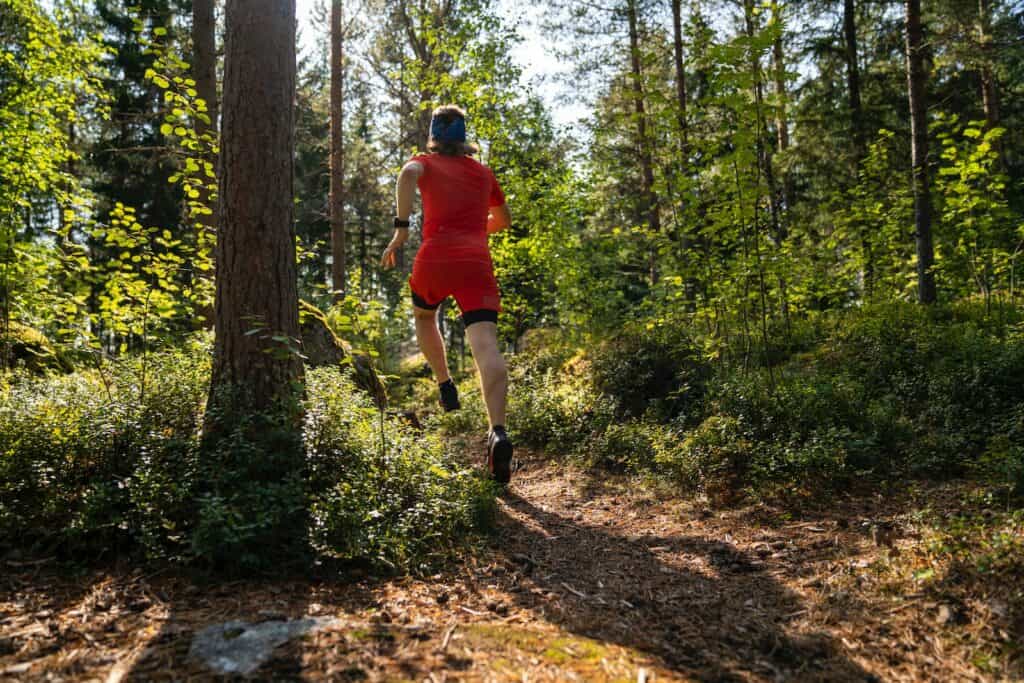Running is a versatile form of exercise that boasts multifold health benefits. Yet, many people yearn for a change from the monotonous road running and are seeking something that connects them more with nature. If you’re just getting started with a running hobby, trail running can be the perfect shift you need. There’s a certain thrill to veering off the beaten path, maneuvering through varying terrain, and surprisingly, the many benefits of trail running for beginners are quite compelling.
Understanding Trail Running

Trail running generally refers to running on trails rather than the well-groomed paths or sidewalks found in urban environments. This involves taking on uneven terrain including single track trails, climbing steep elevations, hopping over tree roots and loose rocks, and running downhill – not for the faint-hearted but certainly rewarding.
Trail running is often juxtaposed with road running. While both forms offer certain health benefits, trail running comes with its unique perks. Roadrunners yearn for speed and exact mileage, whereas trail runners value the journey irrespective of how far or fast they go. Thanks to the softer surface provided by the trail, it’s gentler on the joints compared to the unforgiving asphalt or concrete road, reducing the risk of injuries.
What separates trail running from its asphalt-bound cousin are trail running shoes, specially designed for uneven ground to maintain balance, providing extra support, grip, and protection against sharp rocks. Specific trail running gear including the right shoes and stakes are not a luxury but a necessity.
Physical Health Benefits of Trail Running for Beginners
Perhaps the most alluring aspect of trail running is its tremendous physical health benefits. Cardiovascular health benefits greatly from sustained aerobic exercise. It uses more muscle groups compared to road running because you are engaging your core for balance, changing up your stride length to navigate obstacles, and putting your ankle strength to the test.
Unlike running on pavement, the very nature of trail running compels you to adjust speed, use different muscle groups, and shift positions due to the unpredictable terrain which includes technical trails, rugged terrains, and varied terrain. Varied terrain also means you’re more likely to vary your workouts, engaging different muscles, and building muscular and cardiovascular endurance throughout your body.
Mental Health Benefits of Trail Running

Don’t disregard the mental health benefits that trail running offers. The act of running releases endorphins, mood-enhancing hormones, creating a sense of euphoria or the runner’s high. The experience of hitting the trail, breathing in fresh air, getting a bit dirty, and spending time in green spaces away from city life can be a significant stress reducer, promoting mental well-being.
Getting away from the urban environment to the serenity of running trails can have major psychological benefits. It provides a kind of “green therapy” that reduces mental fatigue, anxiety, and promotes a sense of tranquility. It strengthens mental fortitude as runners battle the physical challenges of elevation gain and technical terrain.
Improved Balance and Coordination
The uneven terrain of trail running functions as a natural obstacle course. This, while demanding, significantly improves balance and coordination. It requires constant awareness and quick decisions to avoid falling over loose rocks or tripping over tree roots. It enhances core strength and agility significantly more than hitting the same routes of road running.
Variety and Interest in Trail Running
Running the trails never gets boring. Each trail run brings new experiences, from new trails to different weather conditions to bad weather and unexpected wildlife encounters. The changing scenery beats staring at the same houses in your local park. Not to mention, different seasons offer different perspectives, making even the same local trails seem new and exciting.
The Social Aspect of Trail Running

Just as roadrunners have their races, trail runners too embark on trail races and even half-marathons during trail runs. Beyond the physical and mental benefits of trail running, there is a profound sense of connection formed within the community of outdoor enthusiasts. Many trail runners find themselves engulfed in a community that fosters camaraderie and a profound sense of belonging.
Above all, if you’re planning to start trail running, take it slow. Remember, it’s not a race; allow your body to acclimate to the new running surface. And, since you’ll be sharing the trails forces you to learn trail etiquette, and respect the space of mountain bikers, horse riders, and hiking groups.
Essential Trail Running Tips for Beginners
Perhaps you’re already a roadrunner, testing new waters, or simply a beginner starting with the trail. Either way, stepping into the world of trail running might appear quite overwhelming at first. Fret not, armed with the right trail running tips, you’re set for a thrilling journey, and here’s how.
Firstly, choosing the right trail is pivotal. Your local park or a nature reserve nearby is the perfect place to start. The undulating terrain providing minor uphills, downhills, and bends will help accustom your body to the mechanics of trail running. These off-road paths come with fewer obstacles and a softer surface, easier on your joints and bones, providing a comfortable cushion to prevent injuries.
While the notion of conquering the most challenging trail in your area might seem exhilarating, it’s advisable to play down the rigors initially. Trails with extreme uphill and downhill slopes or rocky terrains are laborious and might pose difficulties for beginners. Acclimatizing to the effortless trails first is the way to go.
Once you’re comfortable running on the trail, it’s time to embrace the adventurous spirit of the trail running community. Step up your game by practicing on slightly more complex terrains. Increase the complexity gradually. Start with bumpy trails, then ones with embedded rocks, roots or bumps – this will enhance your agility and balance. And then, you’re all set to conquer the most challenging landscapes!
Remember – preparation is key. Armed with your trail shoes, trail running gear, and these tips, trail running will become less daunting and certainly more enjoyable. Wear a smile, keep a slow pace, soak in the scenery, and the trail is all yours to explore. Good luck embarking on this challenging yet beneficial form of running!
Final Thoughts – The Benefits of Trail Running for Beginners
In conclusion, the benefits of trail running for beginners extend beyond the physical into the realm of the mental and emotional. Once you put on your trail shoes and hit the trail, you are opening yourself up to a world where physical and mental fitness are intertwined with the love and appreciation for the natural world. So, whether you’re an experienced roadrunner looking for something new or a beginning runner looking to start with a bang, trail running may be just the ticket. Just remember to maintain balance, wear the proper gear, and most importantly, appreciate the journey. Happy trails!
